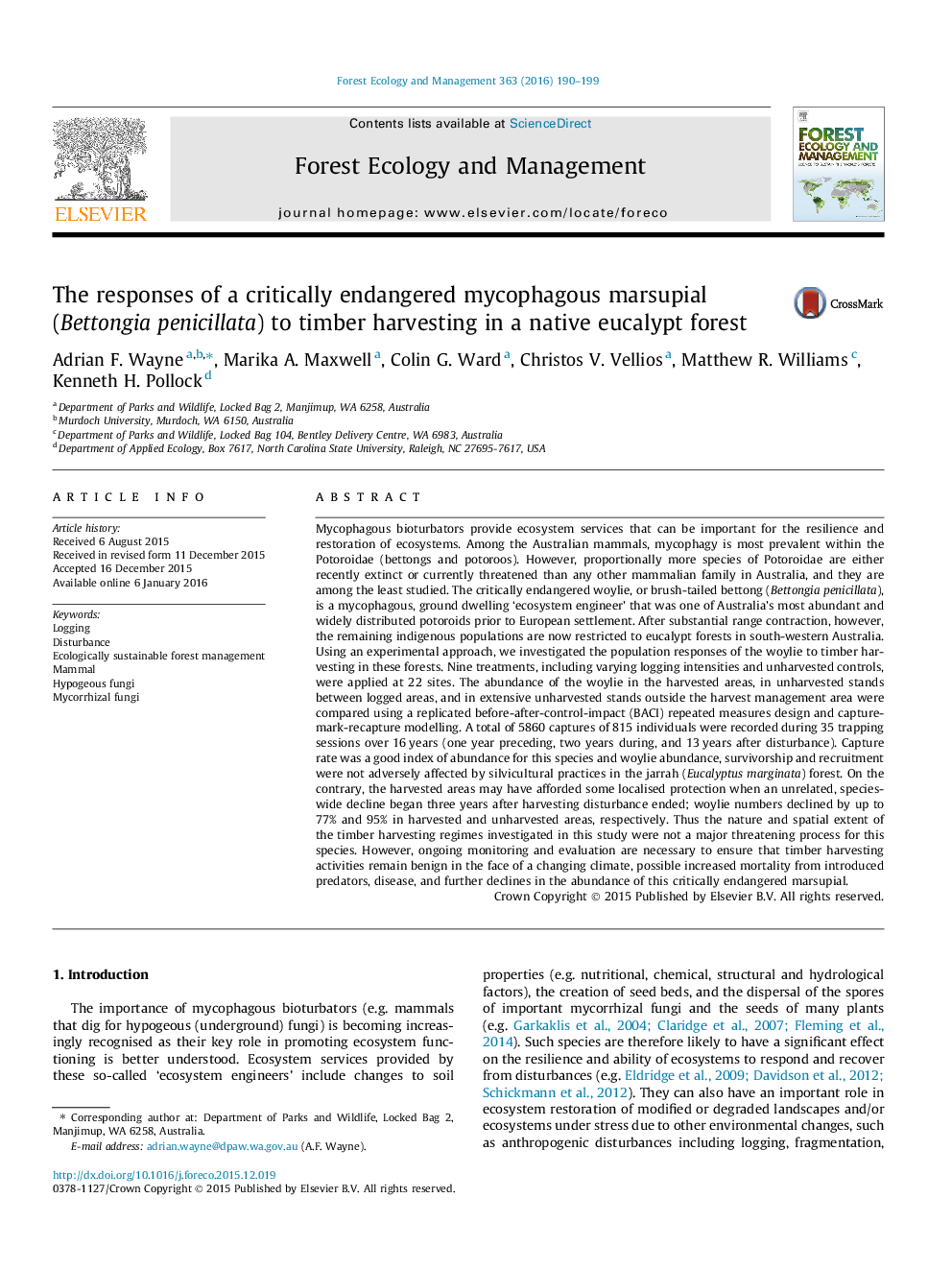| Article ID | Journal | Published Year | Pages | File Type |
|---|---|---|---|---|
| 86022 | Forest Ecology and Management | 2016 | 10 Pages |
•Mycophagous bioturbators can be important for ecosystem resilience and restoration.•The critically endangered woylie (Bettongia penicillata) is an ecosystem engineer.•A BACI designed experiment investigated woylie responses to timber harvesting.•Woylie abundance, survivorship and recruitment were not impacted by timber harvesting.•Harvested areas may have protected woylies during a subsequent species-wide decline.
Mycophagous bioturbators provide ecosystem services that can be important for the resilience and restoration of ecosystems. Among the Australian mammals, mycophagy is most prevalent within the Potoroidae (bettongs and potoroos). However, proportionally more species of Potoroidae are either recently extinct or currently threatened than any other mammalian family in Australia, and they are among the least studied. The critically endangered woylie, or brush-tailed bettong (Bettongia penicillata), is a mycophagous, ground dwelling ‘ecosystem engineer’ that was one of Australia’s most abundant and widely distributed potoroids prior to European settlement. After substantial range contraction, however, the remaining indigenous populations are now restricted to eucalypt forests in south-western Australia. Using an experimental approach, we investigated the population responses of the woylie to timber harvesting in these forests. Nine treatments, including varying logging intensities and unharvested controls, were applied at 22 sites. The abundance of the woylie in the harvested areas, in unharvested stands between logged areas, and in extensive unharvested stands outside the harvest management area were compared using a replicated before-after-control-impact (BACI) repeated measures design and capture-mark-recapture modelling. A total of 5860 captures of 815 individuals were recorded during 35 trapping sessions over 16 years (one year preceding, two years during, and 13 years after disturbance). Capture rate was a good index of abundance for this species and woylie abundance, survivorship and recruitment were not adversely affected by silvicultural practices in the jarrah (Eucalyptus marginata) forest. On the contrary, the harvested areas may have afforded some localised protection when an unrelated, species-wide decline began three years after harvesting disturbance ended; woylie numbers declined by up to 77% and 95% in harvested and unharvested areas, respectively. Thus the nature and spatial extent of the timber harvesting regimes investigated in this study were not a major threatening process for this species. However, ongoing monitoring and evaluation are necessary to ensure that timber harvesting activities remain benign in the face of a changing climate, possible increased mortality from introduced predators, disease, and further declines in the abundance of this critically endangered marsupial.
